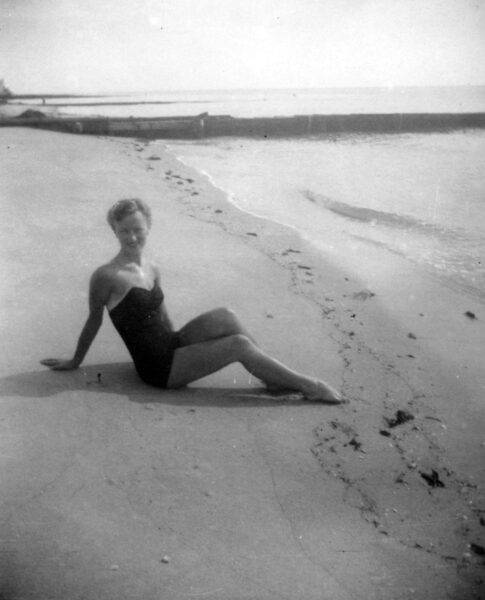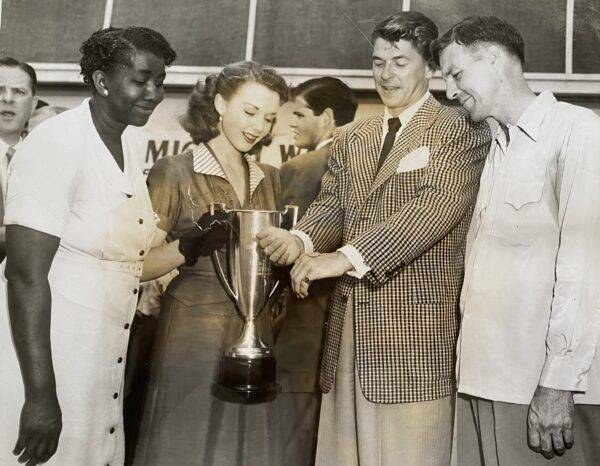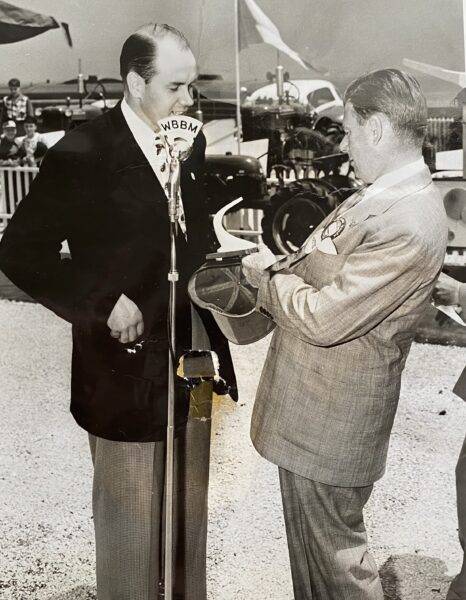
Sailing the Seas of Destiny
Rural Roots to Urban Heights
As I reflect on the life of Anna Mae Simko, I can’t help but feel a deep sense of nostalgia for a simpler time. She was born in rural Ironwood, Michigan in 1927, the 10th of 11 children. Her mother, who came to America from Eastern Europe as a new bride in 1910, gave birth to Anna at their family home on Birch Street with the help of a midwife. Her Hungarian father worked as a miner in the Gogebic Iron Range.
She attended the Norrie School just a few blocks away from her childhood home before moving on to St. Ambrose Parochial School for her senior year. Despite the challenges that came with growing up in a large family in a small town, and without the means to go to college, Anna was determined to make something of herself.
The year was 1945, and four of Anna’s brothers were serving overseas in WWII. That June she graduated from high school and was offered an opportunity to take a civil service exam sponsored by the federal government. She had acquired typing and shorthand skills and was a sponge in soaking up knowledge. The carrot was a full-time office job in either Chicago or Washington, D.C. Eager to begin a life outside of the Upper Peninsula, Anna went for it.
She passed with flying colors and picked Chicago as her city. Her senior yearbook is full of passages that read things like, “Oceans of luck,” from the class of ’45 whose motto was “For God and Country.” Anna Mae set off by train for the big city with two of her classmates who also passed the civil service test – Dorothy (Dots) and Marilyn. Overnight, they went from their family homes to a major metropolis of over 3 million people. Anna was 17 years old – a few months shy of her 18th birthday. The world was at war and so many events of triumph and tragedy were unfolding across the globe. It was just weeks after the collapse of Nazi Germany and two months before the atomic bombings of Hiroshima and Nagasaki.
Back in those days, families were large and religious networks were vast; offering much support to young people making their way in the world. The three girls were met at Union Station by a member of the Catholic church who had arranged for them to stay at a women’s boarding house. It was owned by an elderly widow named Mrs. Moorehouse who lived on the West Side of the city. She welcomed the pals with open arms. Anna started out as a typist working for the U.S. Treasury Department in the sprawling Merchandise Mart. She soon graduated to keypunch operator. She forged many relationships, and became a part of a tight-knit community of new career women.
Anna had clear memories of V-J Day on August 14, 1945, when a million people cheered and danced in the streets in the biggest celebration the Windy City had ever seen; men hanging off of street poles, everyone hugging each other and waving the American flag. It would not be long before Dots and Marilyn got homesick for Ironwood and their boyfriends back from the war. To them, Chicago was a brief adventure before marriage, and they boarded the Chicago & Northwestern northbound — but not Anna. She was in this journey for the long haul.
By 1949, Anna set her sights on a whole new adventure. She wanted to be what was then dubbed in the airline training films as an “Airline Glamour Girl.” She collected her savings, bought a couple of pieces of luggage, and left the Treasury Department to attend hostess school in Kansas City, Missouri. She took a huge risk by giving up a good job, apartment, and friends to move into a dorm and begin an 8-week intense course to learn all about aircraft, flights, schedules, and dealing with sometimes difficult passengers (such as the overly amorous or occasionally “tipsy” businessman). Stewardess training included makeup lessons and physical exercise to perfect posture and develop impeccable balance.
But after earning her diploma and doing her new uniform, once she left the mock-up plane and went airborne, Anna didn’t fare so well. She struggled with altitude sickness and had to abandon the dream. It must have been a huge letdown to give up on a career she longed for, but when she would reflect on it decades later, she just shrugged her shoulders. It says something about the resilience of the era to just cut your losses and move on. There were too many possibilities before her. Anna got a job at a jewelry store as a secretary to the owner to save up and get back to Chicago. She had a new polish about her, and a fierce determination to find her place in the world.
As fate would have it, Chicago was in the process of putting up buildings and exhibits for a major Fair along 60 acres of lakefront (site of modern-day McCormick Place). The Chicago Fair of 1950 opened up an office in the Loop. Armed with impressive typing, shorthand, and new airline business and charm skills, Anna took the streetcar downtown and walked in without an appointment to inquire if they were hiring secretaries.
The PR Manager was in dire need of an assistant and asked if she knew how to handle a Dictaphone transcription machine. She didn’t have a clue, but had a bright enough smile and enough confidence in her stenographer skills (she had already mastered Gregg shorthand), she knew pushing a foot pedal and transcribing words from a “Dictabelt” to a typewriter would be a cinch. So she told them, “yes, absolutely,” and Office Manager Woodman Gibson hired her on the spot. A a few weeks later their offices moved to the fairgrounds off of Lake Michigan.
The Chicago Fair of 1950 was an exposition depicting and dramatizing achievements of agriculture, commerce, industry, and science. Dubbed “Frontiers of Freedom,” the fair was designed to instill in visitors a new awareness of the real America. The official symbol (seen above) was called the Spiramid. It was an exciting summer and Anna met many celebrities including Florence Henderson, Bob Crosby, Bill Hayes, Margaret O’Brien, and then actor, Ronald Reagan.
When the Fair wrapped, her next stop was working in Public Relations for the Chicago Mayor’s office under Mayor Martin Kennelly. With many new talents under her belt — including helping to coordinate celebrity events at a major expo — she later moved on to work for the advertising agency of Merrill, McEnroe where her smarts and creativity truly flourished. There she gradually climbed the ladder and took on more responsibility for various ad campaigns.
I remember when the television series “Mad Men” came out, I bought her the first season on DVD thinking she’d love it. Surprisingly, she was not impressed. “Men weren’t that mean,” I remember her saying 60 years later. For her, working in advertising at Merrill, McEnroe was nothing less than a wonderful, rewarding experience where she advanced her career. No one held her back.
The decade of 1945-1955 was a time when a young girl from a quaint Michigan town dared to dream big – no small feat. Perhaps the young 17-year old was too naive to even think about all of the things that could have gone wrong. Or maybe it was just in her DNA to defy limitations and embrace risk. In the words of Eleanor Roosevelt, “The purpose of life is to live it, to taste experience to the utmost, to reach out eagerly and without fear for newer and richer experience.” And in the words of Katherine Hepburn, “If you obey all the rules, you miss all the fun.”



